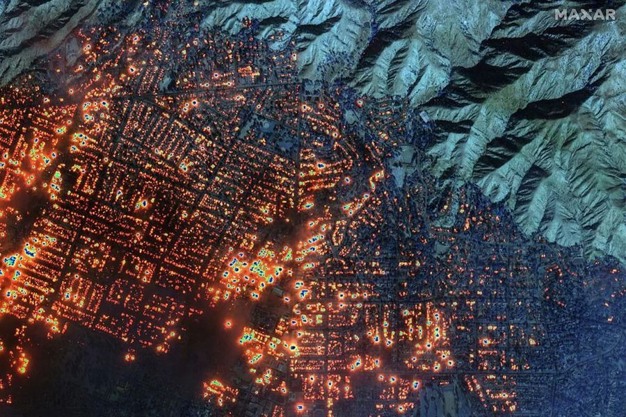The Los Angeles region is battling one of the most devastating fires in recent history and the conditions that fuel the fires aren't slowing down. The combination of a lack of rainfall and unusually strong Santa Ana winds drive the rapid growth. The largest fire - The Palisades Fire - grew to 17,234 acres late Wednesday, followed in size by the Eaton Fire that was taking up 10,600 acres on Wednesday. The Palisades Fire extends along the coast between Santa Monica and Malibu. The region is home to some of the most expensive real estate in the United States and neighborhoods like the Pacific Palisades have many homes owned by celebrities. The Eaton fire reached dense neighborhoods in Altadena in the foothills of Angeles National Forest. The image below shows how the Eaton wildfire has set nearly every building in western Altadena on fire.

Satellite image from Maxar Technologies shows how the Eaton wildfire has set nearly every building in western Altadena on fire.
In addition, a new fire, called The Sunset Fire, erupted yesterday in the Hollywood Hills neighborhood. In this neighborhood, the roads are notoriously difficult to navigate due to the steep, narrow, and winding terrain.
So far, at least five people have died, and more than 130,000 people have been forced to evacuate. Thousands of buildings have burned and according to different news reports, the fires are zero percent contained. While high wind speeds have decreased overnight, another surge is forecast for late Thursday into Friday, with gusts up to 60 mph.
While the cause of the fire is under investigation, the region still hasn't started its typical fall and winter rainy season. More erratic and extreme precipitation patterns, including drier dry periods and wetter wet periods, are extending the fire season.










